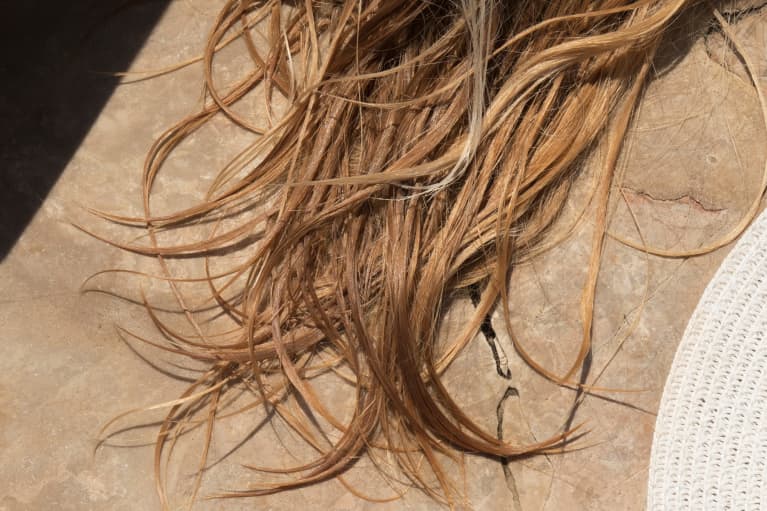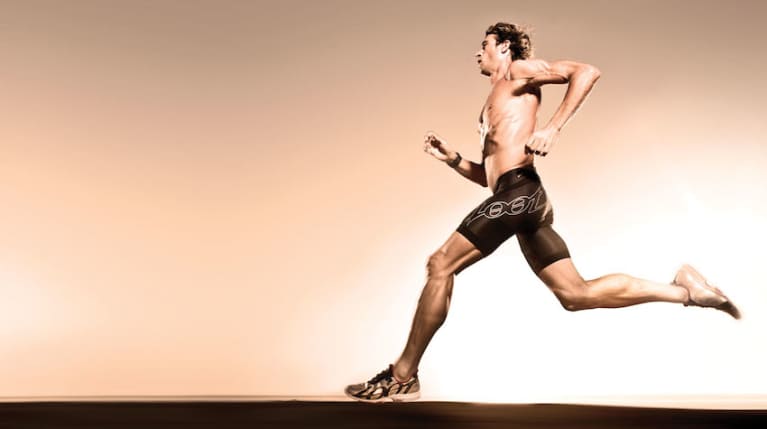

December 28, 2019 — 13:04 PM
Apple cider vinegar is one of the trendiest hair care ingredients of late—you’ll find it as an ingredient in everything from a scalp detox to a shampoo. Part of the reason it’s become so popular is the plethora of DIY anecdotes and recipes on the internet.
So, how do you actually use it at home? We investigated.
The healthy hair benefits of an apple cider vinegar rinse: It all comes down to pH.
The hair’s pH is very important, as an unbalanced hair and scalp can cause irritation, dryness, dullness, and frizziness. Your hair and scalp hover around 5.5 normally (studies even show that when your hair products are at or below 5.5 pH, it can reduce frizz and damage.)
Since water is a neutral pH and most shampoos are alkaline, simply taking a shower changes the pH of your hair. “Water’s pH can vary, but it’s usually around a 7—so when you wash it, you are bringing your hair’s pH up to a mid 6—that’s the same pH as a demi-permanent color,” says according to says colorist and co-founder of the salon Spoke&Weal Christine Thompson. “And that’s every time you wash your hair.”
When the pH of the hair changes, it causes the cuticle to lift making it frizz-prone and brittle. (On the other hand, when your hair’s cuticle is flat, your hair is healthier, shinier, and smoother.) So the idea is that when you rinse it with something acidic—hello apple cider vinegar!—it brings the pH back down and seals the cuticle shut, leading to shiny, soft strands.
Other claims say that the vitamins, minerals, and nutritious properties strengthen hair, fight flakes, and even contribute to hair growth—but these don’t have any research to back them up.
How to use an apple cider vinegar rinse
It’s one of the most simple DIY products you can master, but there are important steps to follow in order to get the most benefits. You can also find pre-mixed ones that work very well—and usually have added ingredients to amplify the apple cider vinegar properties.
1. Make your mix with ACV and water.
Not all apple cider vinegar is created equal. Always use raw, organic, unfiltered, and unpasteurized apple cider vinegar—and always with the mother, as that will have the most nutrients. (This is more of a critical point when you are ingesting it, but it doesn’t hurt topically either.) With your apple cider vinegar of choice, mix in ½ tablespoon of ACV for every 1 cup of cold water to dilute the vinegar.
2. Repurpose an old shampoo or conditioner bottle.
Mix your tincture in an old hair care bottle. Since you’ll be in the shower and distributing this throughout your head, you’re going to want to have a squeezable bottle. Sure, you could try mixing it in a jar or glass, but you will have less control as you apply it throughout the scalp (plus they tend to be heavier and easier to drop; you don’t want broken glass in your shower.) Another easy option is a clean condiment bottle with a pointed nozzle to better get under the hair and directly on the scalp. As a final packaging trick: Try an old spray bottle, like a non-aerosol hairspray tube, so you can spray it on the scalp and hair in the shower. But don’t overthink it: Whatever you have around the house will likely suffice.
3. Your rinse should be fresh—every single time.
If you pick up a professional hair care apple cider vinegar rinse, it will have a decent shelf life. But the ones you’re making at home? It’s not going to have the same preservatives and stabilizers—which can be a good thing, in our world—but it also means you need to make your rinse single-use.
4. Find your right application method.
Finding the right time to use it for you is highly individual—and might vary depending on your hair’s needs at that time. However, the idea of a rinse is that you are limiting the number of times a week you need to do the full wash cycle: “The biggest culprit to dull hair is over shampooing, so I highly suggest using a rinse a few times a week to extend time between your regular shampoo and conditioner routine to keep your hair bright healthy and vibrant,” says celebrity colorist Justin Anderson, co-founder and creative director of hair care brand dpHue.
Here’s a good place to start, and from here you can adjust based on your personal experience. No matter the way you use it, be sure to let it sit on the hair for upwards of five minutes before you rinse it out.
- If you have really oily hair and lots of buildup, use this after your shampoo for a deep clean. This will be too drying to do regularly, however. Only use this when you need to really clarify the scalp.
- If you wash your hair regularly, and don’t typically have dry strands or scalp, consider swapping in a rinse one or two times a week in place of a wash and conditioner. This will help cleanse the hair, remove any buildup from product that your regular shampoo can’t get, and add shine as it’s laying the cuticle down flat. And remember: ACV is not a surfactant or soap so it will not lather like your standard shampoos might.
- If you have dry hair, consider using this post conditioner or mask once a week instead of using a shampoo. We also recommend using a pre-shower hydrating hair mask, rinse that out, and then seal the cuticle shut with the tincture. This will make sure you get off any buildup or product.
- For really dry hair, you can also use this in place of your shampoo, and then follow with a conditioner. Just be sure to fully rinse your conditioner out post wash.
No one’s hair is exactly the same—plus individual hair and scalp changes with the environment, weather, and lifestyle. So treat your hair like you do your face, and understand you’ll likely need to try a few ways out to find something that works for you.
5. Rinse it starting at your scalp and pull to the end.
Like you do with a shampoo, start at the scalp. Since your scalp will have the most buildup, you’ll want to make sure you let it do most of the work there. Unlike shampoo, however, you’ll want to make sure this coats the strands: This will remove any product, dirt, or oil, and help close the strands’ cuticles.
6. Anyone can try it—just not always with the same regularity.
Yes, this works for all hair types, from straight and thin to thick and textured. Just need to find a routine and hair care order that makes the most sense for you.
7. Just get your hair colored? Consider skipping the DIY.
Fun fact about color-treated hair: When your cuticle lifts up from water and steam in the shower, the dye molecules literally fall out of your hair dulling the color. Or minerals from product and hard water deposit into the strand, altering the color, says Thompson. So it makes sense that a cuticle-sealing rinse would be the right move—however, DIY recipes might be too clarifying for some color-treated hair. Since chemical processing makes hair more susceptible to breakage, you need to be extra careful with cleaning agents, be that shampoos or rinses. Many professional rinses not only have the powerful pH balancing properties of apple cider vinegar, but they also include added ingredients to make them extra gentle and color-safe. Clean and natural-leaning dpHue’s Apple Cider Vinegar Hair Rinse has argan oil, aloe vera, and a proprietary color-locking blend to help keep your color sharp and last longer. Hairstory’s New Wash (Deep) has keratin, oils, and apple cider vinegar, too.
8. Know when to skip a rinse.
It’s easy to go overboard on anything that sounds this good. But like most things in the beauty space, the key is moderation. If your hair starts to feel too dry, it’s a sign you’re overusing your rinse and you should pull back.
Ready to learn more about how to unlock the power of food to heal your body, prevent disease & achieve optimal health? Register now for our FREE web class with nutrition expert Kelly LeVeque.






